Snapshot USA: EcoPreserve
The Rutgers EcoPreserve participated in the Smithsonian Institute’s Snapshot USA: a collaboration between researchers from each of the 50 states seeking to capture the diversity of animals (with a special focus on mammals) across the United States using camera trapping (https://emammal.si.edu/snapshot-usa-2019-home-page). A network of motion-detector cameras (sometimes referred to as camera traps or trail cams) were set up across the Ecopreserve during the months of September through October, 2019.
This photo gallery is a curated collection from the hundreds of images that were captured. Catch a glimpse of wildlife in their environs when humans aren’t around. Note that some of the individuals recognize the camera’s presence and are quite curious.
White-tailed deer (Odocoileus virginianus) are common inhabitants in the EcoPreserve; so common in fact that their overbrowsing can negatively affect the forest understory and tree/shrub regeneration. However, their grace, beauty and drama (especially during the fall rutting season) enhance the nature observers’ experience.
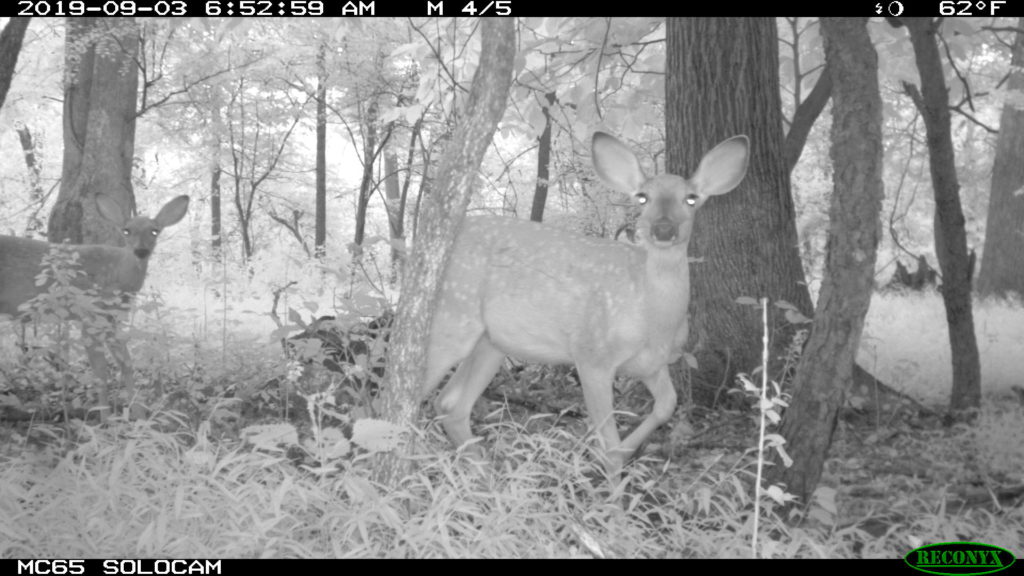
twin fawns 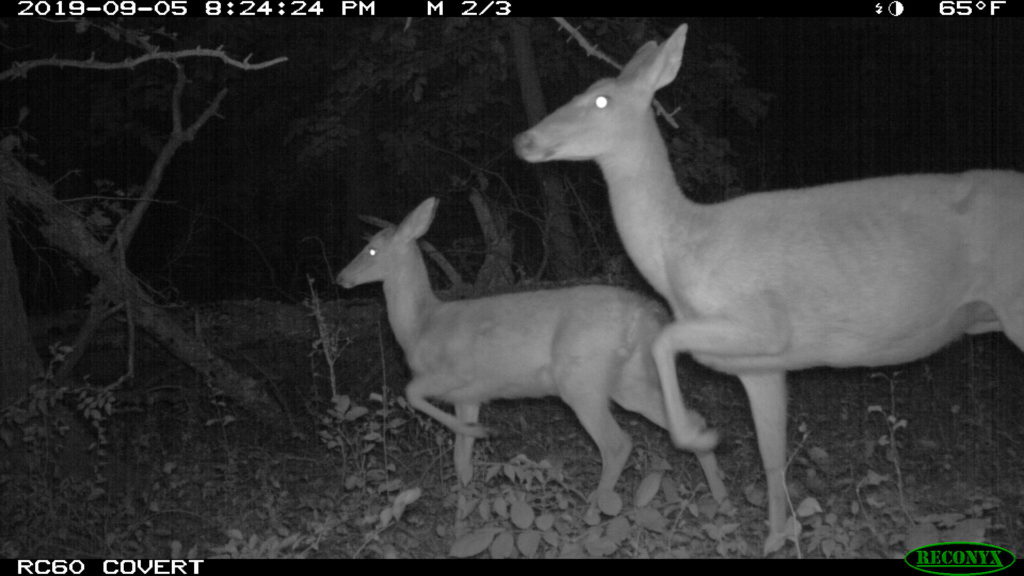
pas de deux 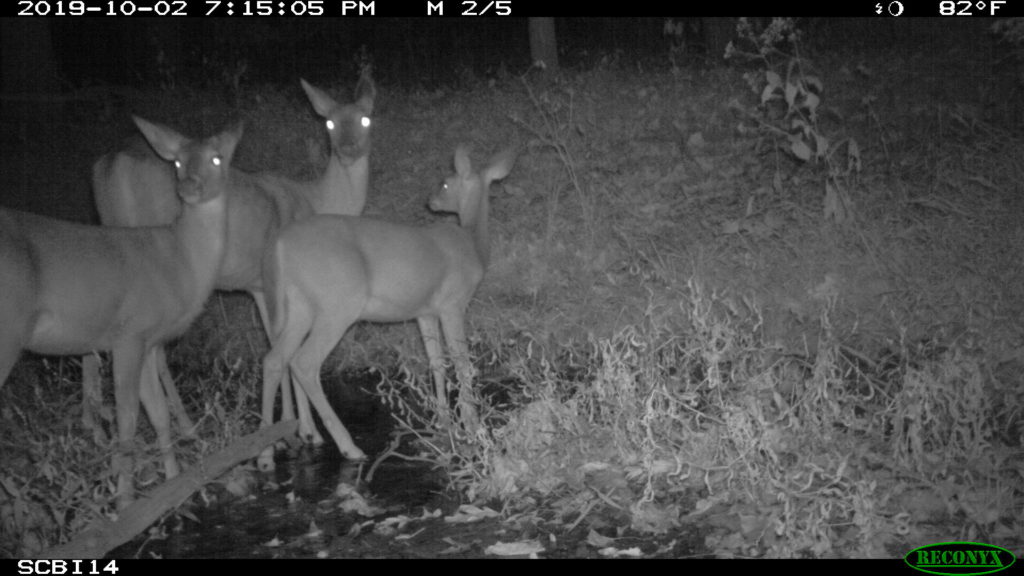
doe & 2 fawns 
doe in meadow 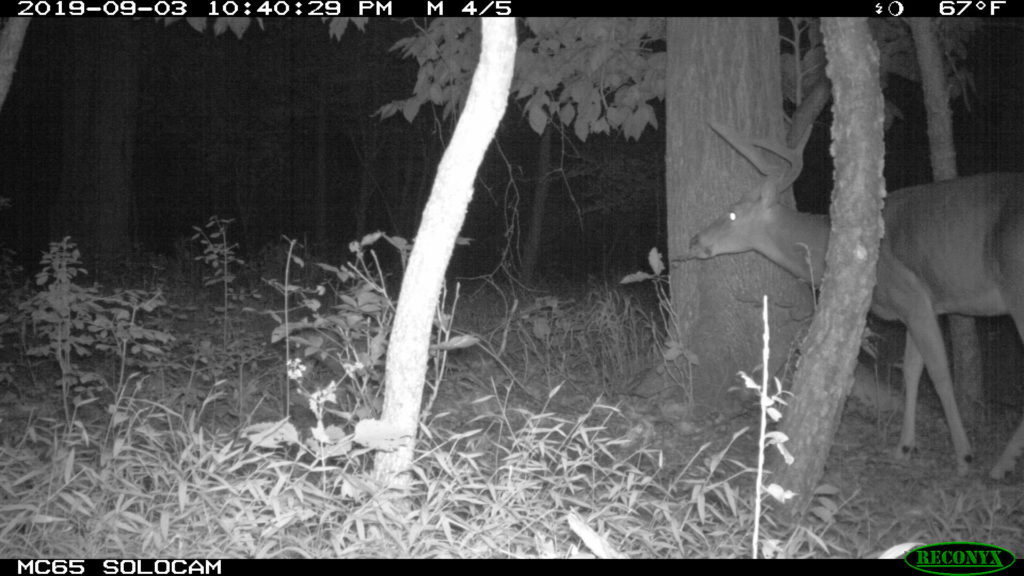
buck in vlevet 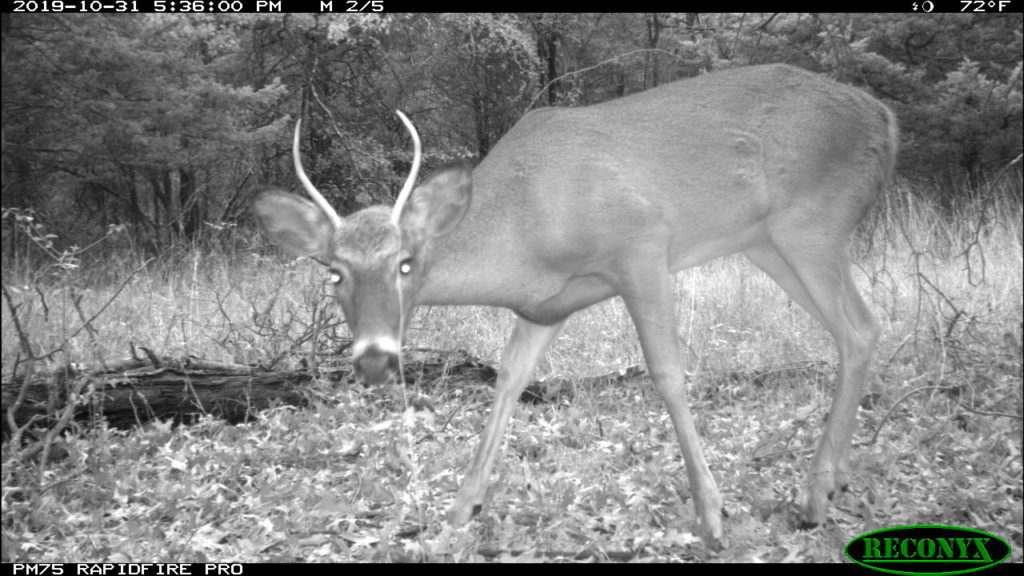
spike buck 
6 pointer 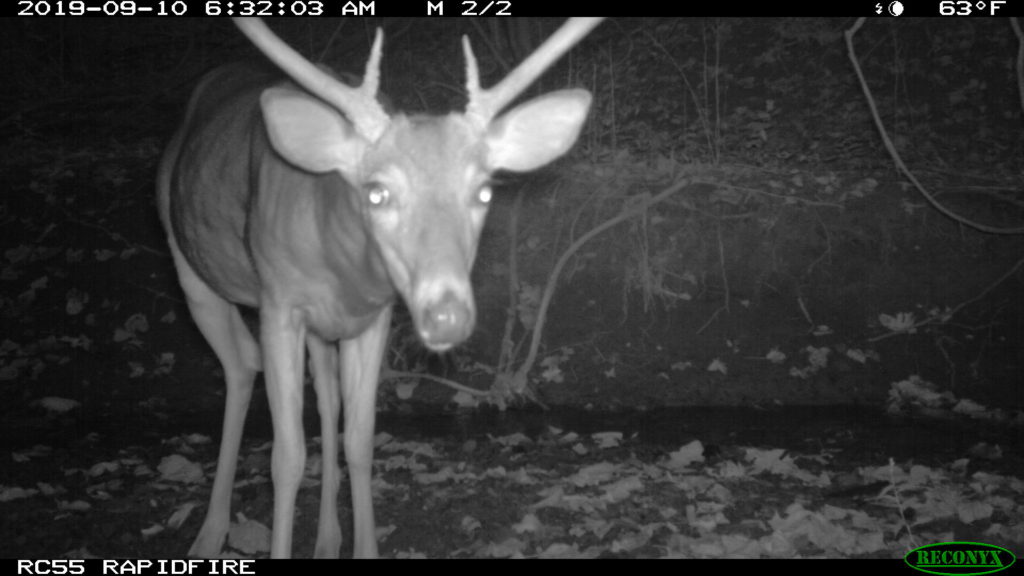
curious buck 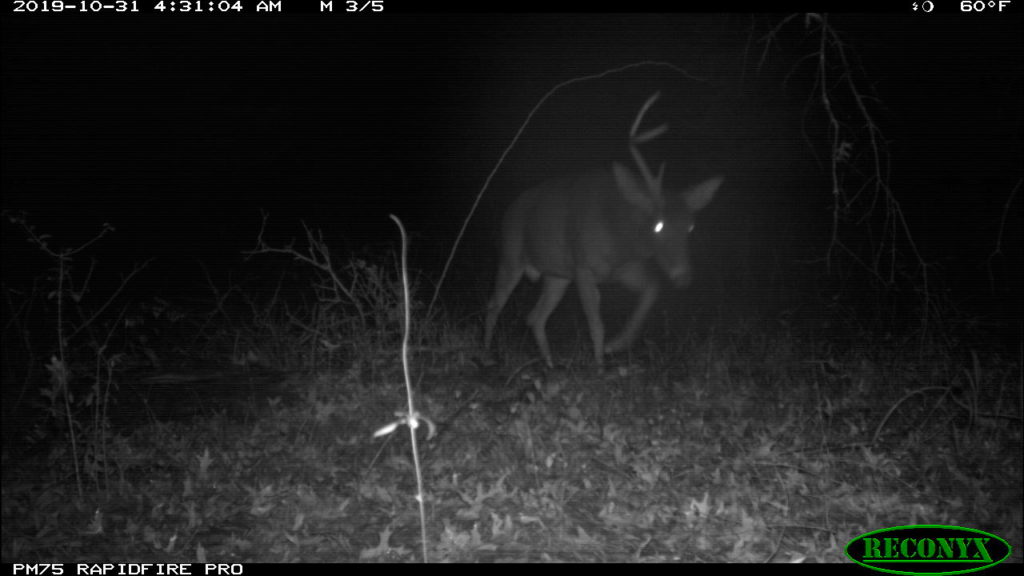
one antlered buck 
8 pointer 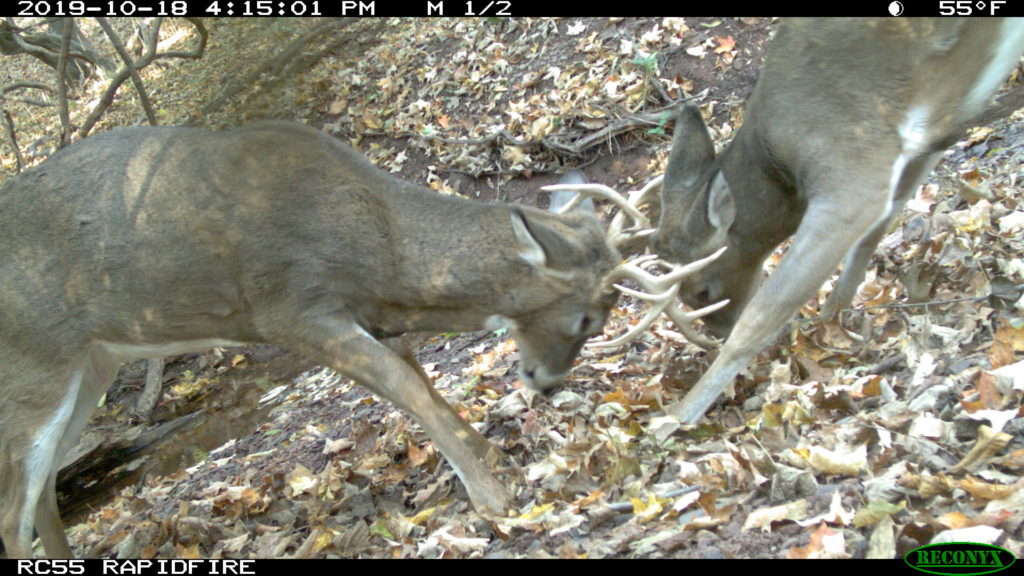
sparring bucks 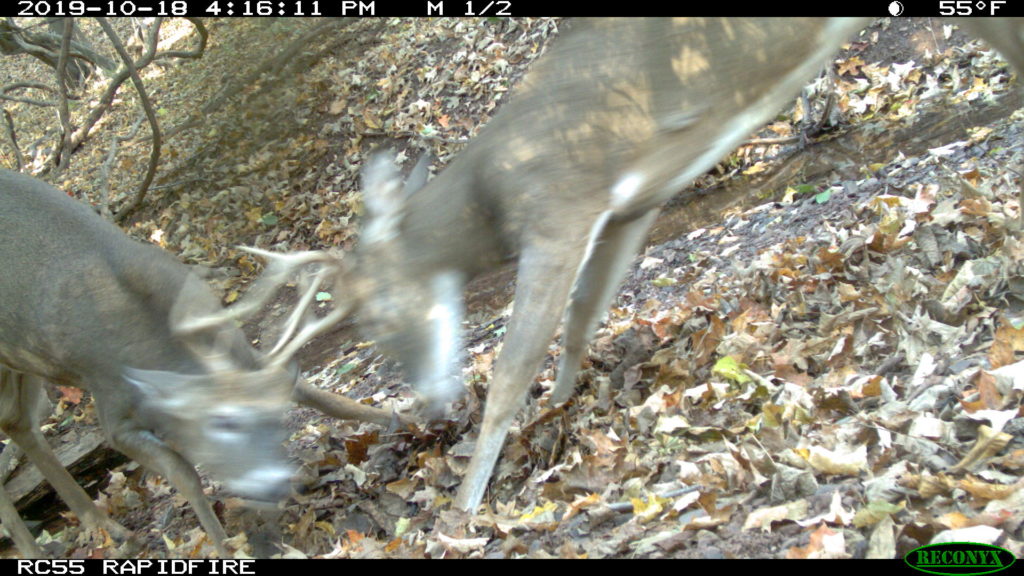
Coyote (Canis latrans) is the EcoPreserve’s other “big game” species (after deer). Coyotes gained a certain notoriety in the Fall of 2019 due to several incidents of an aggressive coyote on Livingston Campus. Coyotes are generally quite shy and will not usually approach people. The camera trapping show evidence of a family group of at least 3 coyotes. The upper right picture is of a red fox, so the viewer can compare the difference in size between the larger coyote and the more diminutive fox.
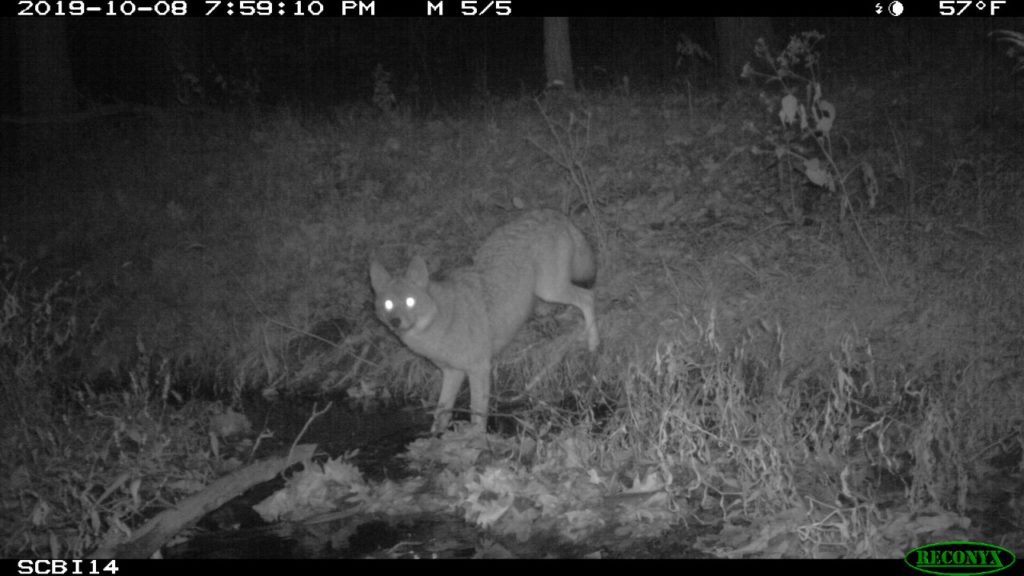
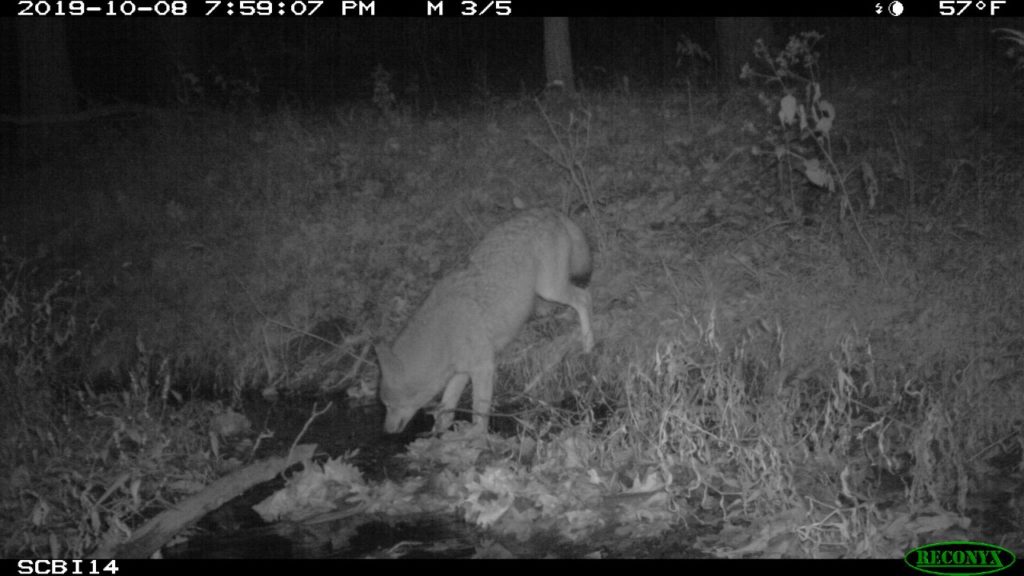
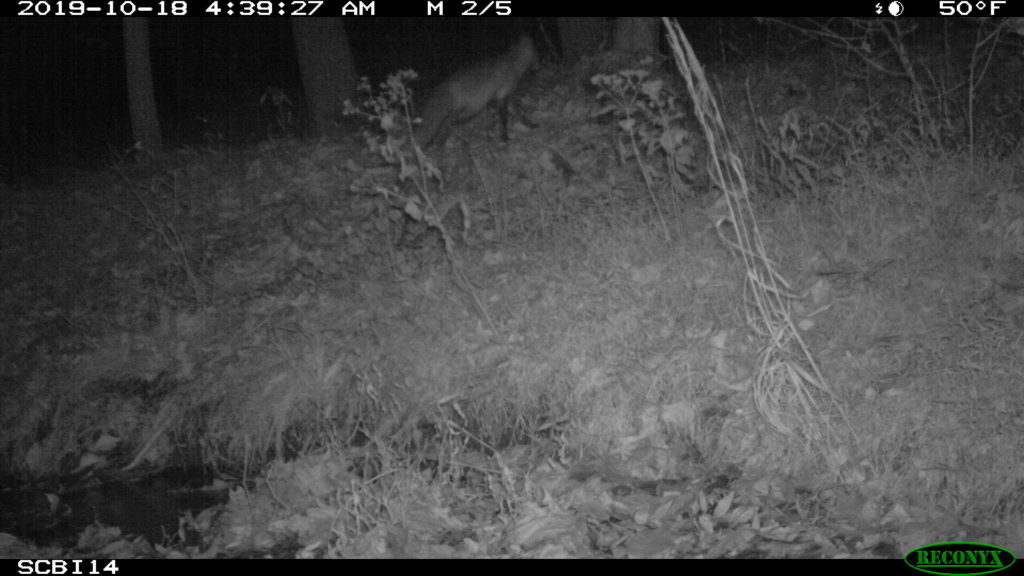
fox for comparison 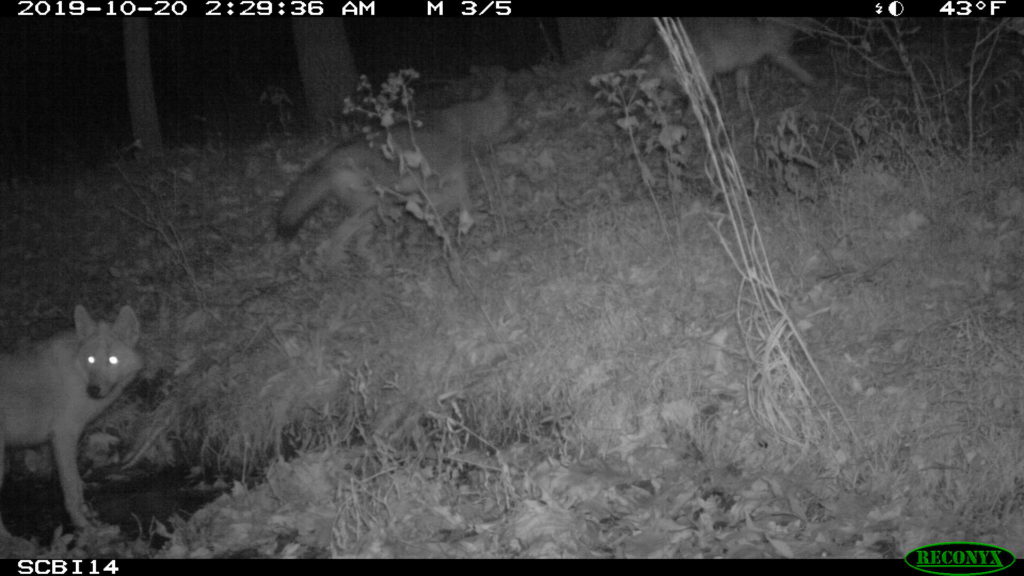
family group of 3 along Buell Brook
Red fox (Vulpes vulpes) are the other canid or wild dog species that inhabits the EcoPreserve. Note the bushy tail with a white tip, sometimes referred to as a brush. Come winter, one can find the dainty four toed footprint in the snow criss-crossing the EcoPreserve in their hunt for mice and other small rodents.

‘very’ red fox 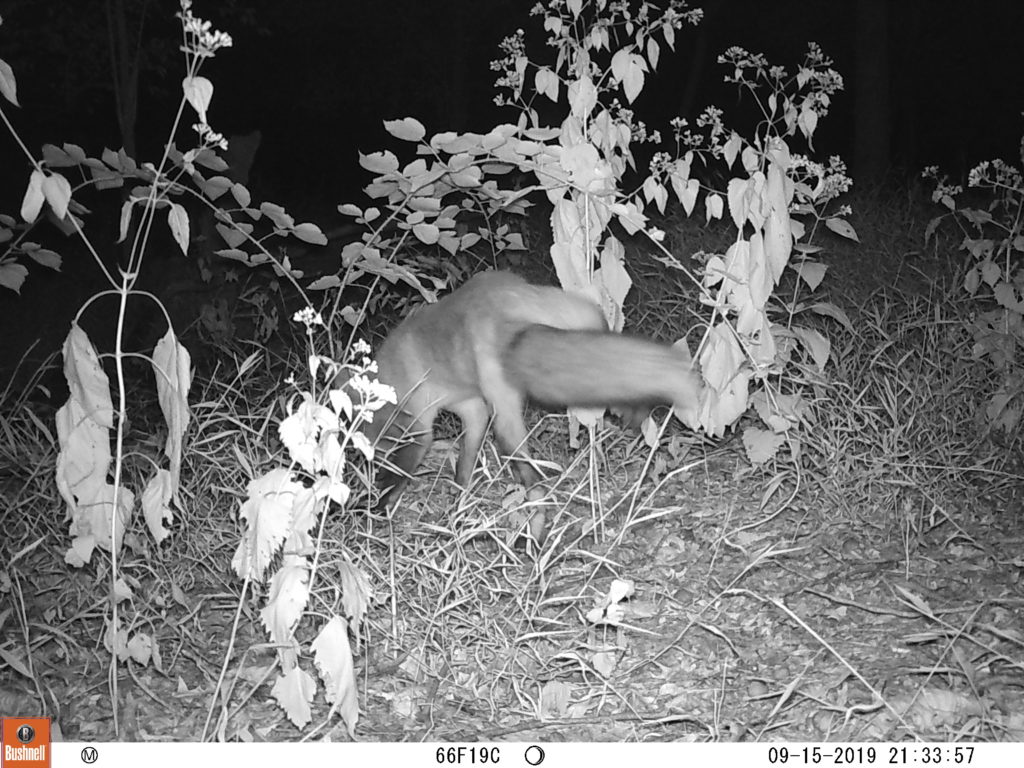
fox scent marking 
injured one-eyed fox
Raccoons (Procyon lotor) are one of the most charismatic wildlife species in the EcoPreserve. While found throughout the EcoPreserve, as documented here, they do like to prowl Buell Brook for prey (minnows, crayfish, salamanders, insects). Raccoons are intelligent, curious creatures and especially intrigued by the motion-detector cameras.
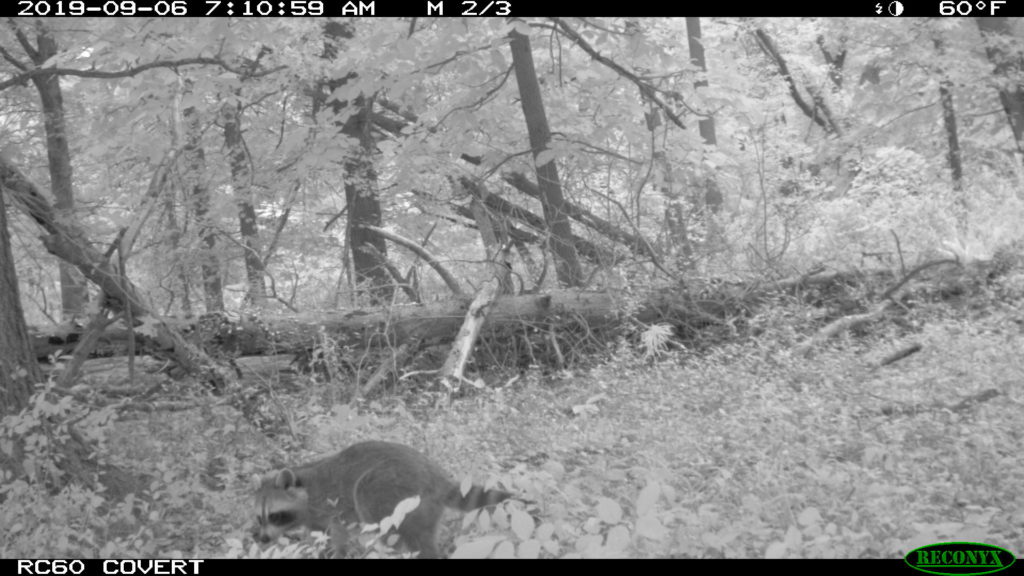
in the uplands 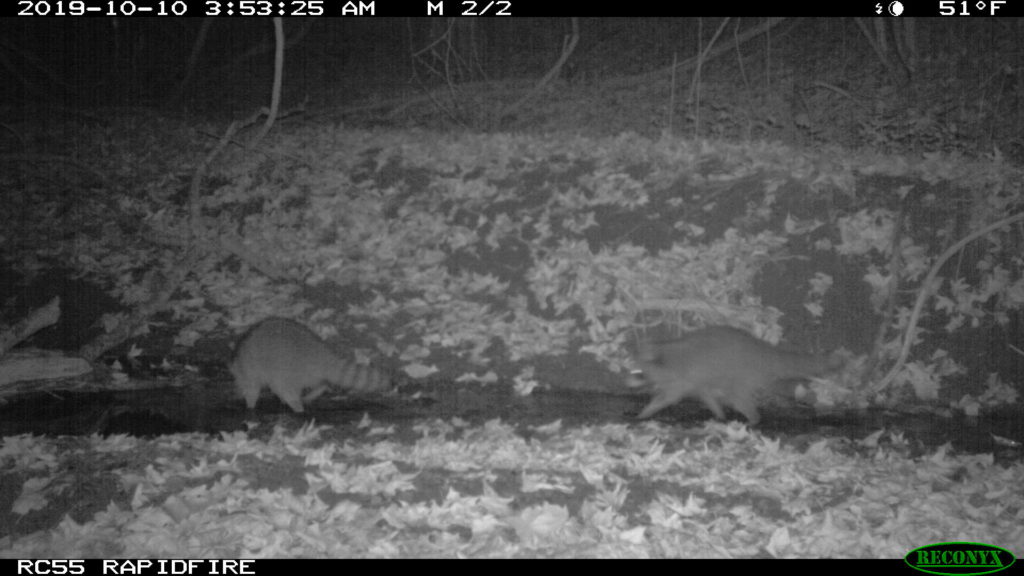
along Buell Brook 
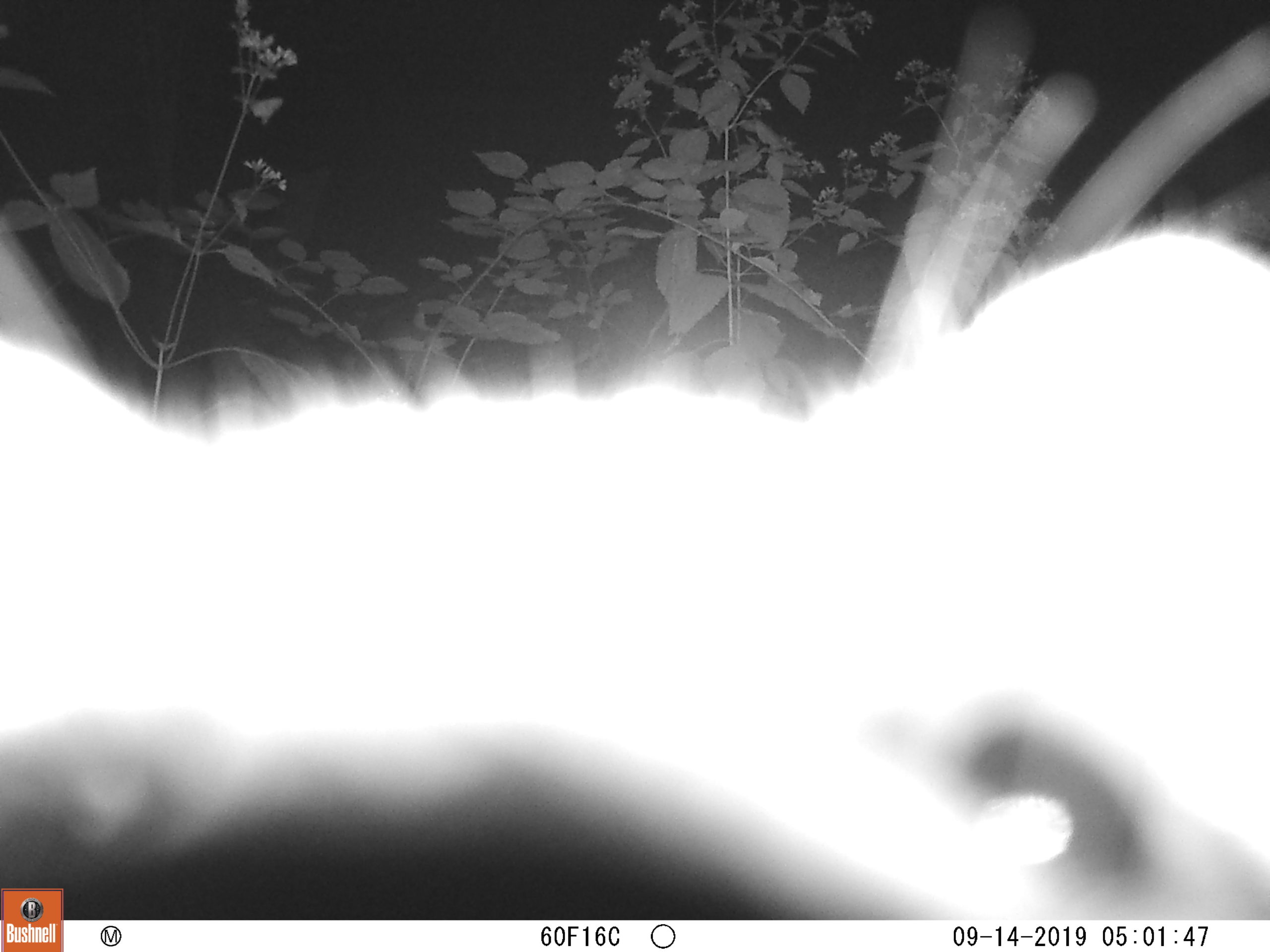
what’s in this box?
Gray squirrels (Sciurus carolinensis) are one of the most commonly seen mammals in the EcoPreserve. They are everywhere. This past fall the squirrels (and other wildlife) were quite busy hunting down and feeding on the bumper crop of acorns.
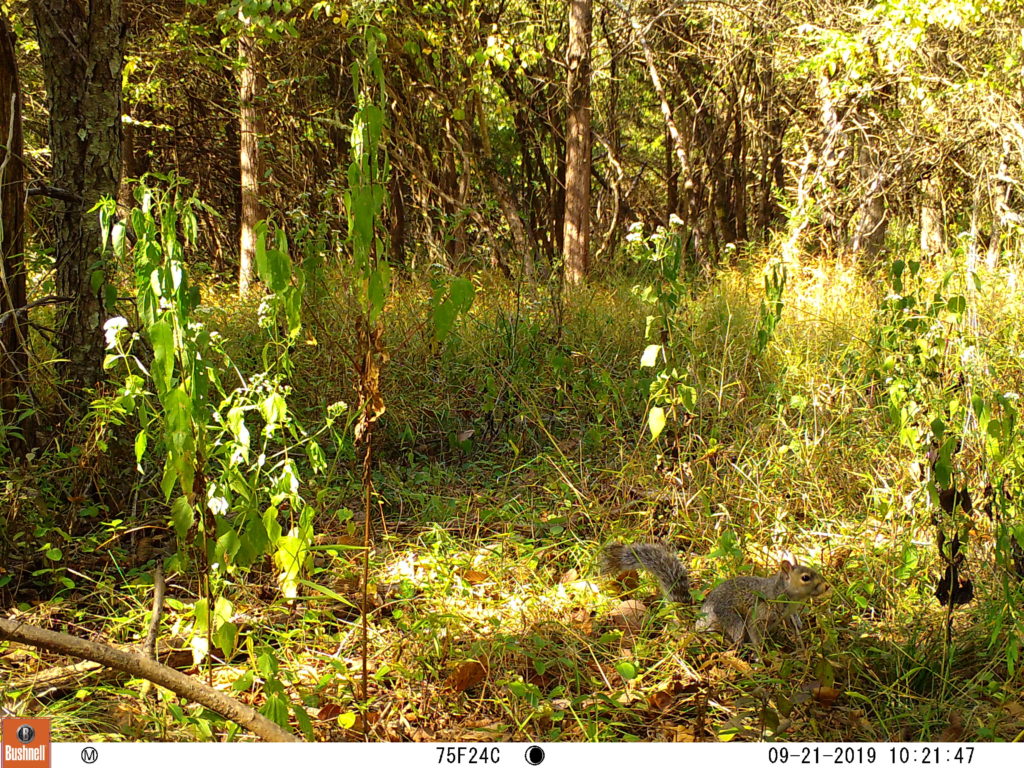
eastern gray squirrel 
squirrel with acorn 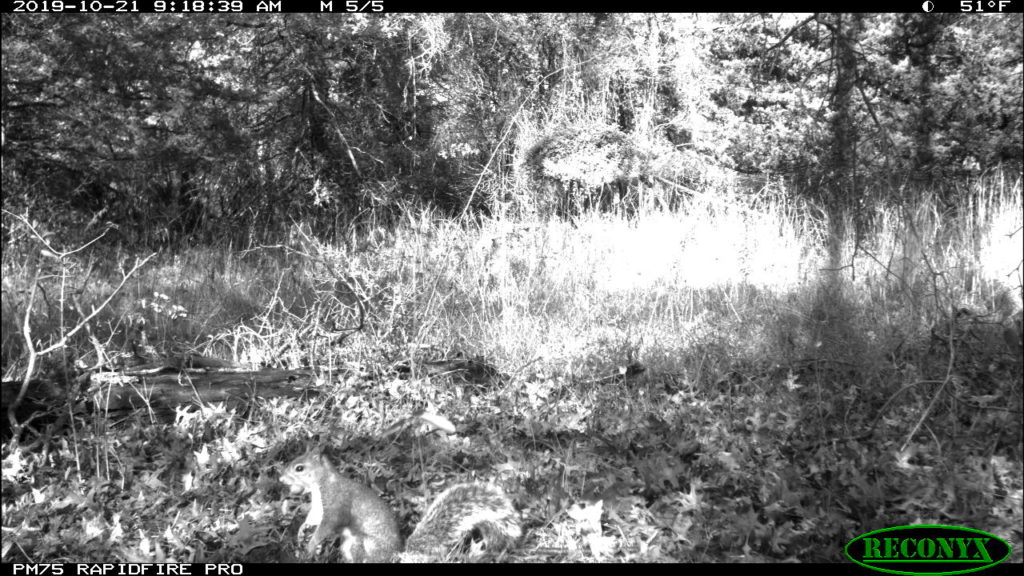
another acorn 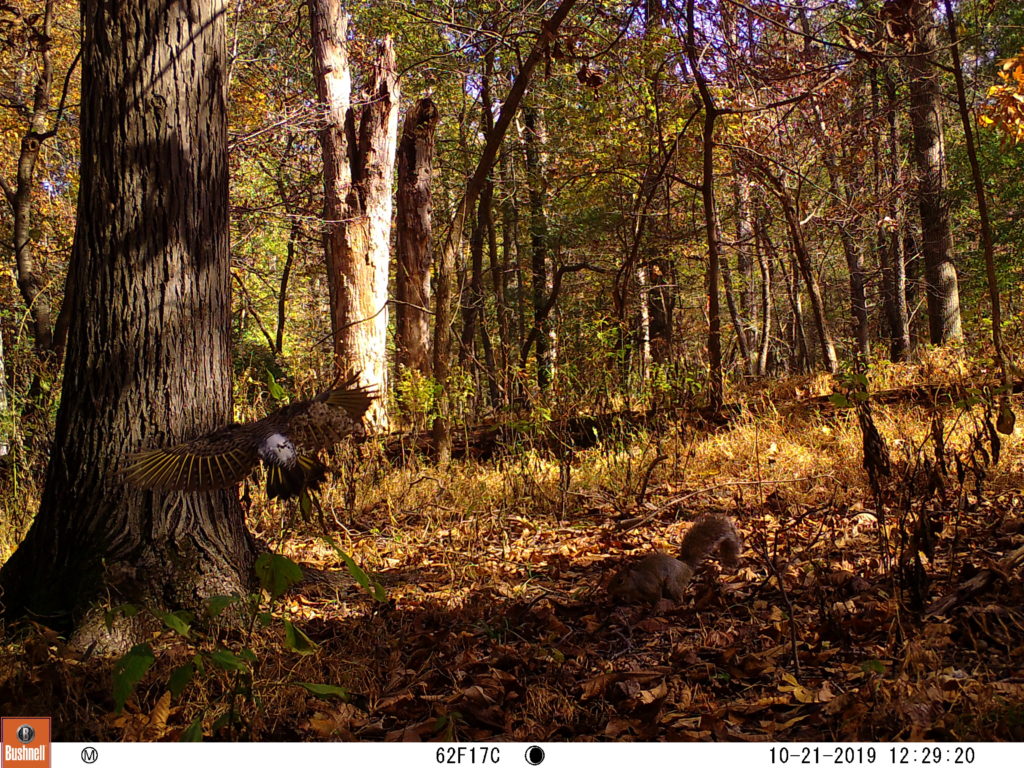
yellow-shafted flicker and gray squirrel
The EcoPreserve is host to a number of other small mammals including striped skunks (Mephitis mephitis), opossum (Didelphis virginiana), eastern chipmunks (Tamias striatus), and white-footed mice (Peromyscus leucopus). Not captured, though we know they inhabit the preserve are cottontail rabbits (Sylvilagus floridanus), woodchucks (Marmota monax), southern flying squirrels (Glaucomys volan), shrews, moles, and a host of bat species, including the northern long-eared bat (Myotis septentrionali), a federally listed threatened species.

striped skunk 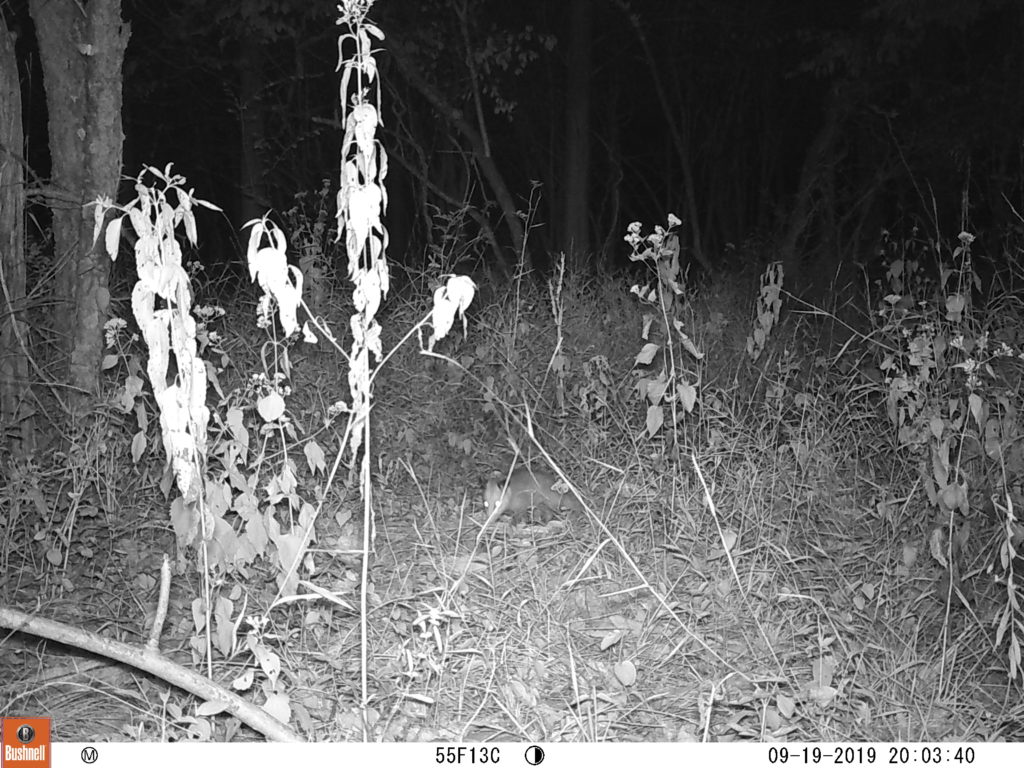
baby possum 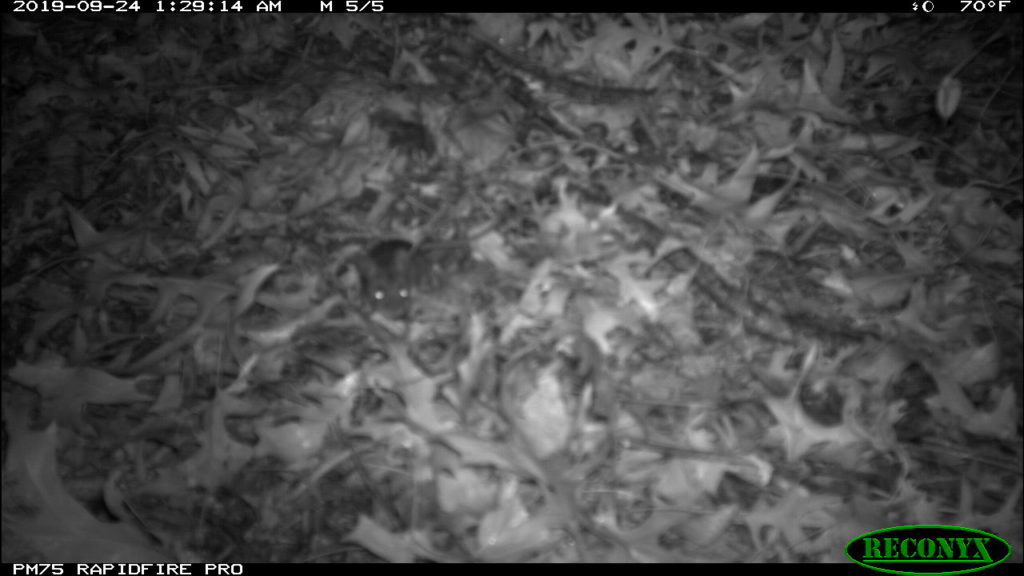
white-footed mouse 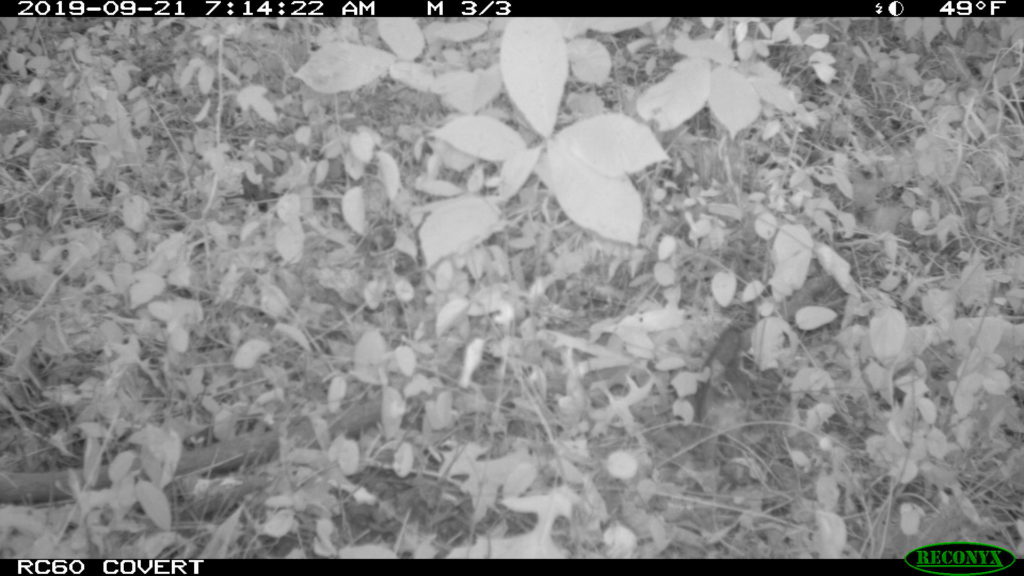
find the chipmunk
The wild turkey (Meleagris gallopavo) is one of the largest upland ground birds native to North America. Wild turkeys appear to be more common in areas of the EcoPreserve with grassy openings and thick red cedar stands.
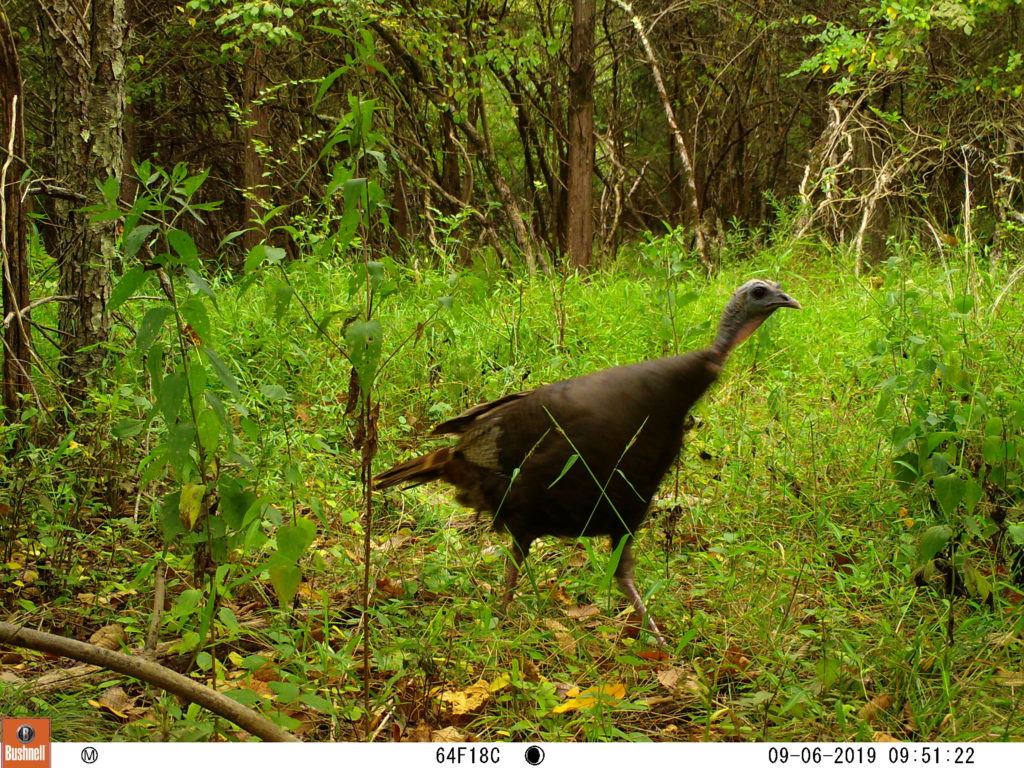
hen turkey 
hen with several poults
Feral cats (domestic house cats that have been released to go “wild”) are an issue across the EcoPreserve as they prey on a host of bird and small mammal species.
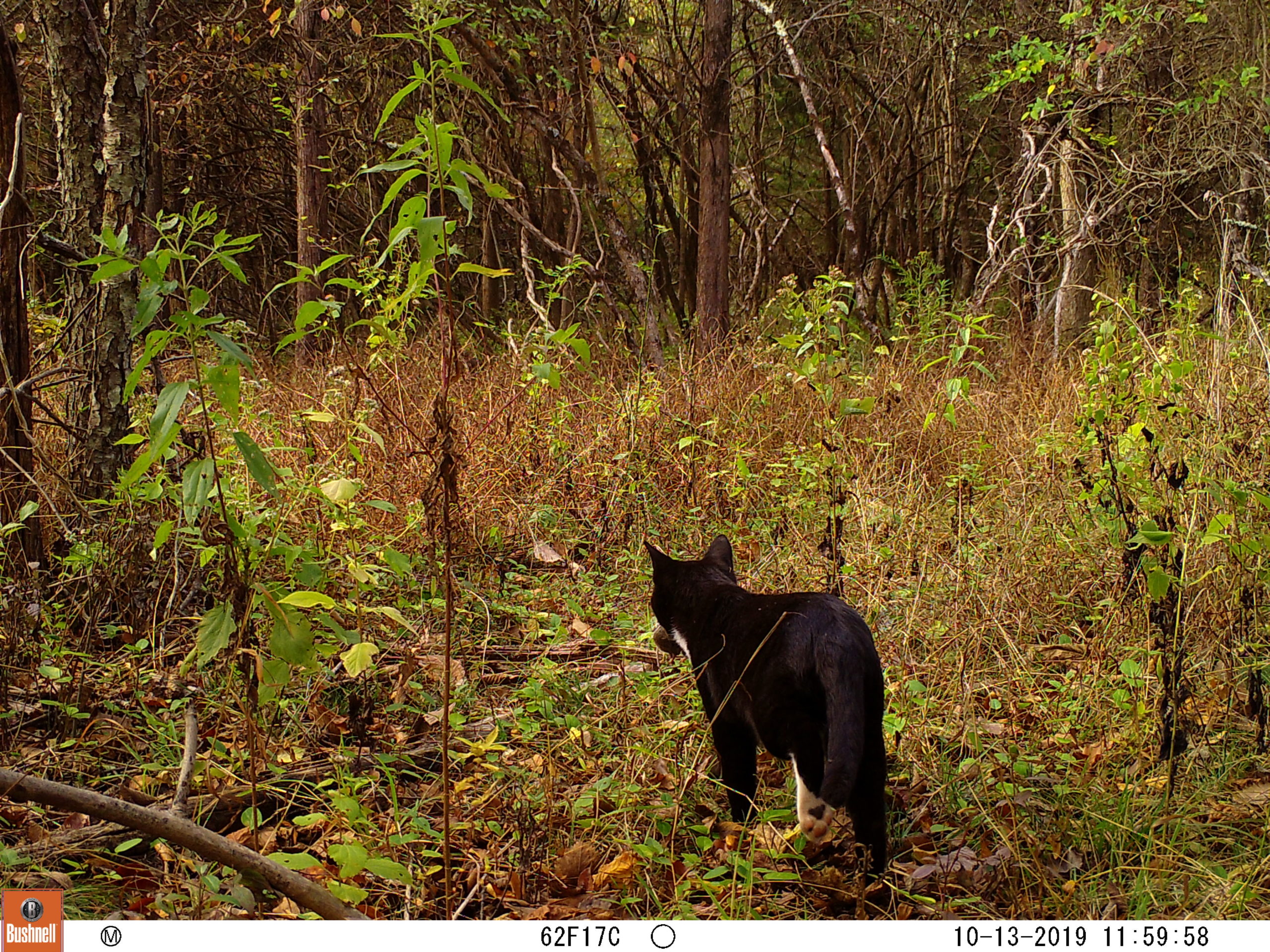
feral cat with small mammal 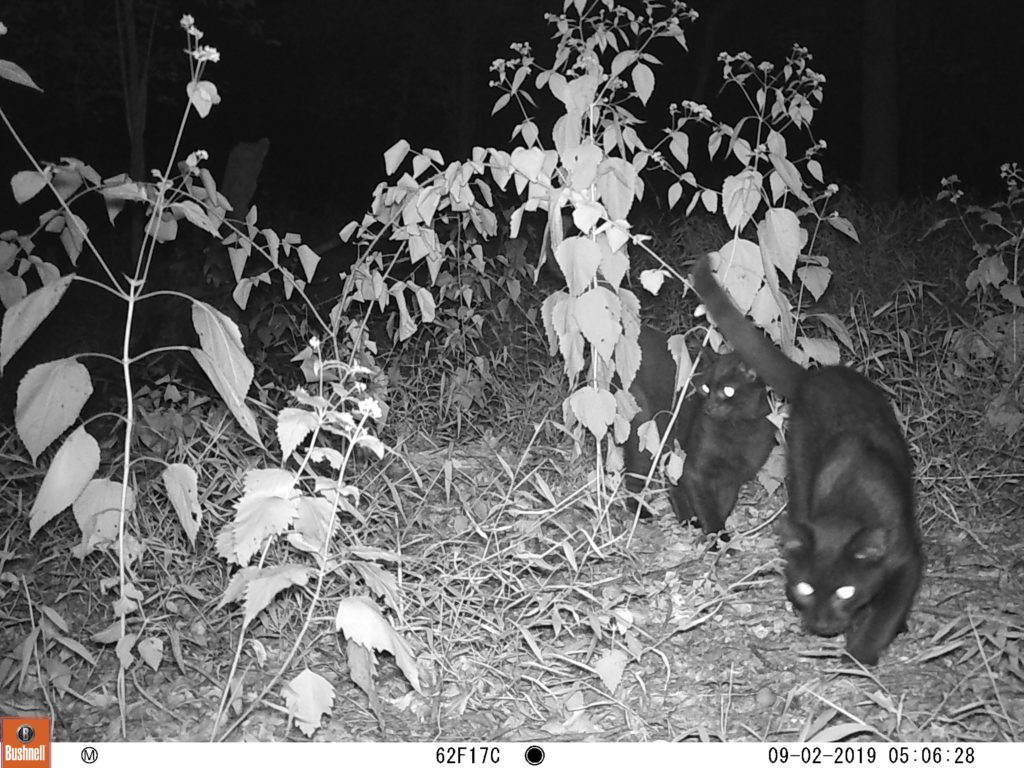
sibling feral cats on the prowl
Rutgers’ participation in the Snapshot USA project, through either the loan or purchase of the motion detector cameras) was supported by the Smithsonian Institution and the Johnson Family Chair in Watershed Resources and Ecology. The camera trapping was undertaken by Dr. Rick Lathrop, graduate student Katie Russell and undergraduate students Andrew Mazza, Raffia Ahmed and Ray Slater.